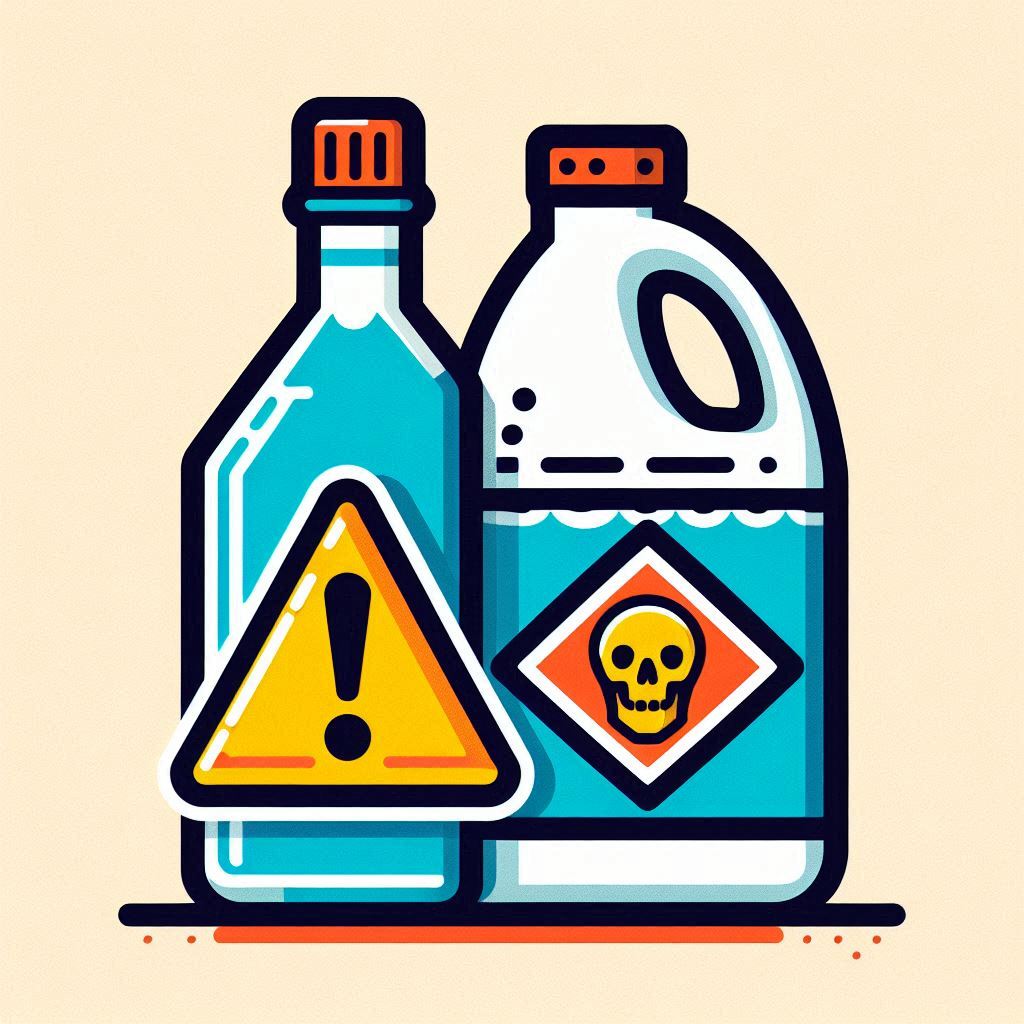When tackling tough stains and disinfecting surfaces, many of us reach for household staples like bleach and vinegar. Both are powerful cleaners—bleach disinfects and removes stains, while vinegar cuts through grime and acts as a natural deodorizer. But while these cleaners shine individually, combining them can create a hazardous situation.
The Danger Behind Mixing Bleach and Vinegar
At first glance, mixing bleach and vinegar might seem like a powerhouse cleaning combo. After all, they’re both effective on their own, so why not supercharge their abilities? The answer lies in chemistry. When these two common household products are mixed, they release toxic chlorine gas, which can be extremely harmful when inhaled.
The Science of the Reaction
Bleach, chemically known as sodium hypochlorite (NaOCl), reacts with acids. Vinegar is an acid, specifically acetic acid. When vinegar is added to bleach, it reduces the bleach’s pH level, causing it to release chlorine gas (Cl₂).
This reaction is as follows:
NaOCl + 2HAc → Cl₂ + NaAc + H₂O
The released chlorine gas was used as a chemical weapon during World War I, highlighting just how dangerous it can be, even in small amounts.
Why Chlorine Gas is Harmful
When chlorine gas is released into the air, it poses significant health risks. Exposure to this toxic gas can lead to a variety of respiratory problems and other symptoms, including:
Coughing and difficulty breathing: Chlorine gas irritates the respiratory system, causing immediate symptoms like shortness of breath, chest tightness, and persistent coughing.
Burning of the eyes and throat: The gas can cause a burning sensation in sensitive tissues, leading to watery eyes, a sore throat, and other discomforts.
Nausea and vomiting: High concentrations of chlorine gas can cause dizziness, nausea, and vomiting, all of which are serious signs of overexposure.
Long-term lung damage: Even brief exposure to chlorine gas can cause lung damage, and prolonged or high levels of exposure can result in severe respiratory conditions or even death.
The Right Way to Use Bleach and Vinegar
Both bleach and vinegar are excellent cleaners in their own right, but they should never be used together. Here’s a breakdown of when and how to use them safely:
Bleach: Ideal for disinfecting surfaces, particularly in the bathroom and kitchen. Bleach is effective at killing bacteria, viruses, and mold, but it should be used in well-ventilated areas and always diluted properly with water.
Vinegar: A natural cleaner, vinegar is best for cutting through grease, mineral deposits, and soap scum. It’s particularly useful on glass, stainless steel, and countertops. However, vinegar is not a disinfectant, so it won’t kill germs as effectively as bleach.
Important: If you’ve used bleach to clean an area, wait until it has completely dried before using vinegar or any acidic cleaner in the same spot.
Safer Alternatives for Cleaning
If you’re looking for a versatile, all-in-one cleaner, consider safer alternatives that don’t carry the risks of bleach and vinegar. Some good options include:
Hydrogen peroxide: This is an effective disinfectant that can be used on a variety of surfaces without the risks associated with bleach.
Baking soda: When mixed with water or vinegar, baking soda can provide scrubbing power without the need for bleach. Just remember, baking soda and vinegar won’t disinfect as bleach does.
Final Thoughts: Safety Comes First
Cleaning your home doesn’t have to come with risks. Understanding the science behind bleach and vinegar and why they shouldn’t be mixed is key to keeping your home safe and toxin-free. By using these cleaners separately, you can harness their power without endangering your health. Always read the labels, follow safety guidelines, and ensure proper ventilation when using any chemical cleaners.

